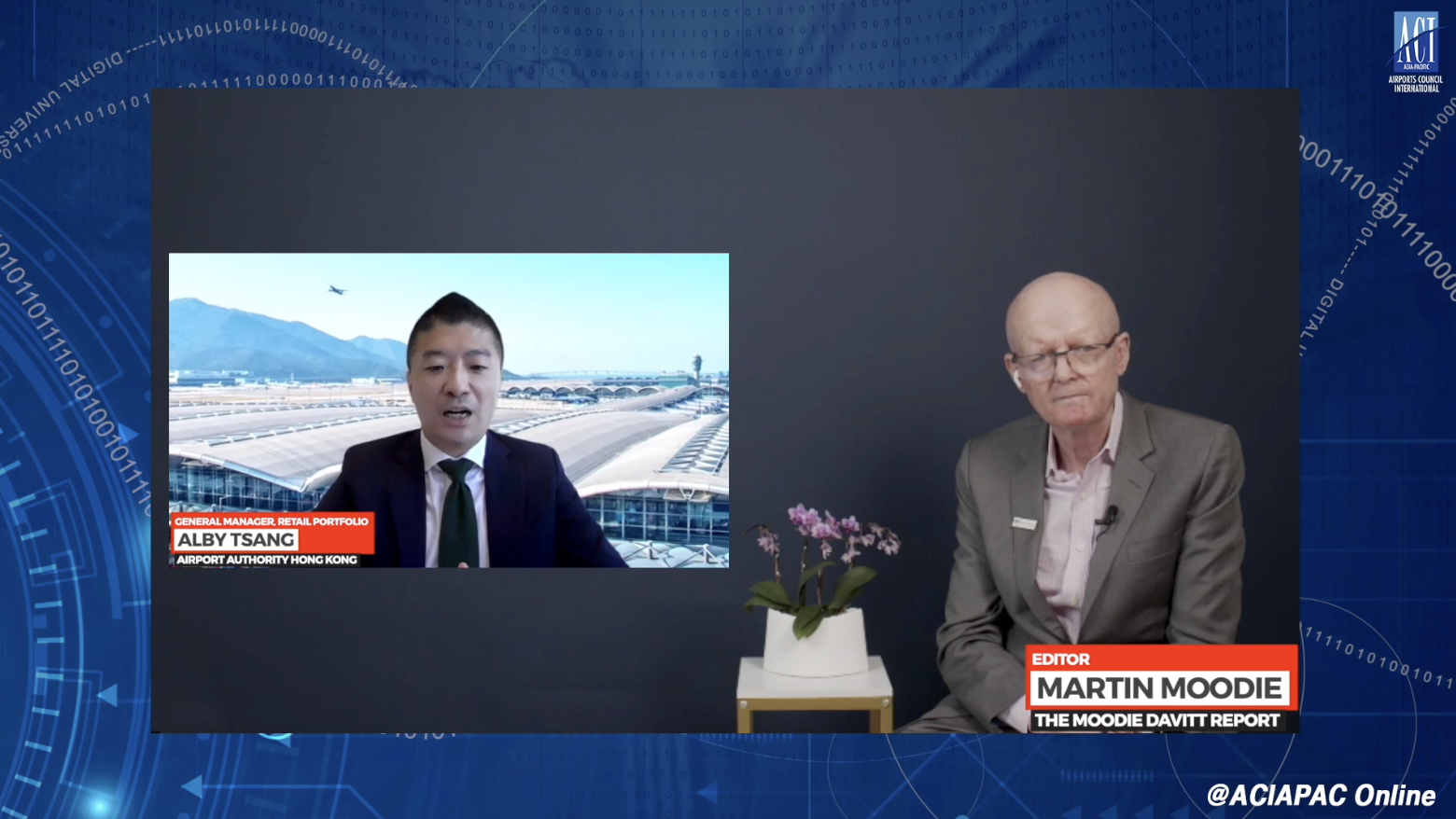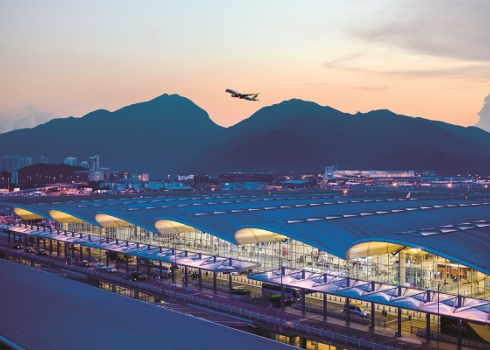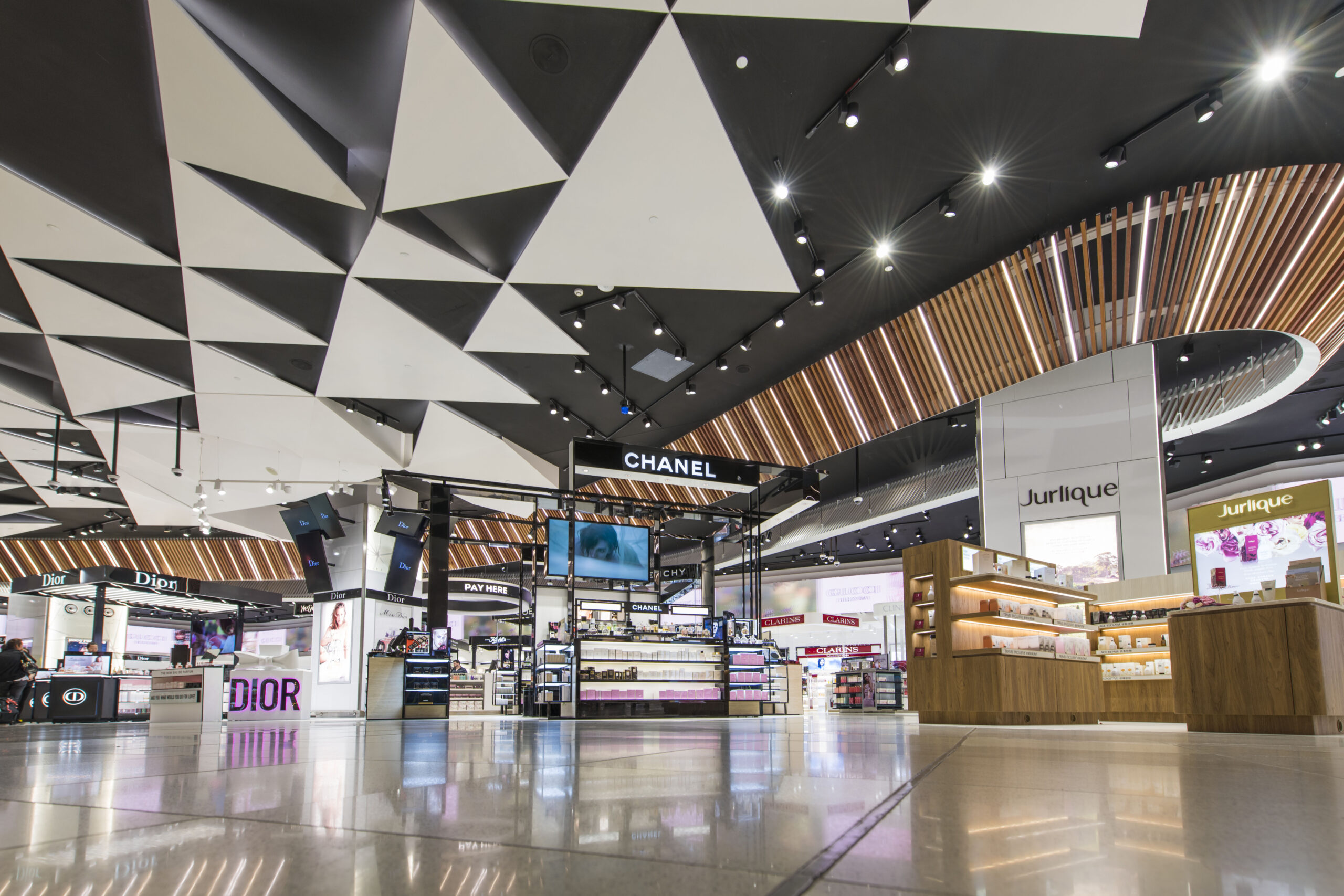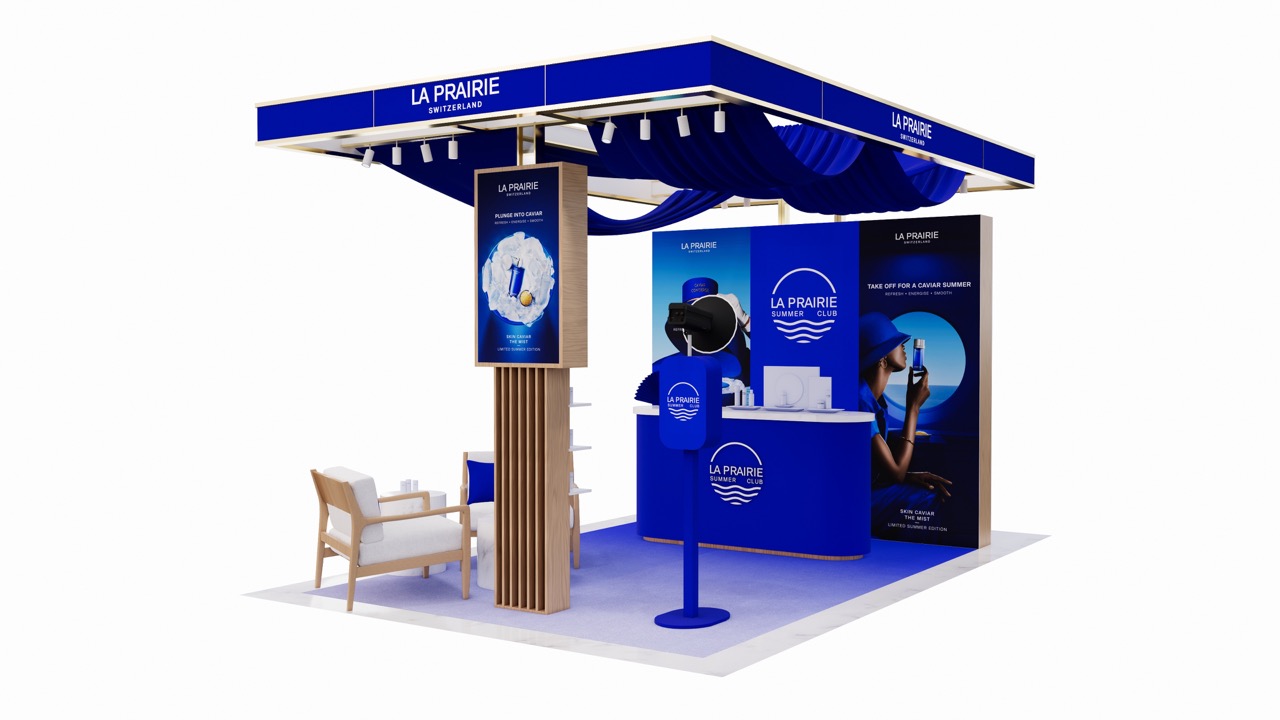ASIA PACIFIC & MIDDLE EAST. Senior commercial executives from high-profile airports in the Asia Pacific and Middle East regions have given fascinating insights into how the travel hubs they represent have adapted and invested as they eye recovery from the COVID-19 pandemic. These, and many other key related subjects, were discussed in detail during the latest compelling session of ACIAPAC Online*, a popular weekly webinar run by Airports Council International (ACI) Asia-Pacific.
Giving an upbeat vision of the future to The Moodie Davitt Report Founder & Chairman Martin Moodie in a session titled Spurring the revival of airport commercial revenues were Andrew Gardiner (Chief Commercial Property at Australia Pacific Airports Corporation, which runs Melbourne and Launceston airports, and Chief of Launceston Airport); Alby Tsang (General Manager Retail Portfolio, Airport Authority Hong Kong); and Thabet Musleh (Vice President Operations, Qatar Duty Free).

The scale of the crisis on airports globally was put into perspective with some key statistics supplied by ACI World Vice President Economics Patrick Lucas. The global passenger decline in 2020 was some -65% compared with the projected baseline, translating to a loss of an estimated 6.1 billion passengers.
Airports in 2020 made a cumulative loss of US$125 billion, equivalent to the revenues of the 95 busiest airports in the world being completely wiped out. The human costs included an estimated 46 million jobs supported by aviation and 4.8 million direct aviation jobs lost.
Click on the video to play the full ACIAPAC Online session.
As previously reported, ACI forecasts that the international aviation market will not recover to 2019 passenger volume levels until 2024 or 2025, while the domestic passenger levels of two years ago may not be restored until the end of 2023 at the earliest.
The airport commercial panel were asked what lessons have been learned during the pandemic period, and the achievements that they are most proud of during this time. Giving the Hong Kong international Airport (HKIA) perspective, Tsang noted that regular changes in guidance and rules relating to COVID-19 protocol from the Hong Kong government meant “staying agile and reacting properly to changes” was critical.

Tsang praised the spirit of partnership experienced with HKIA’s retail partners, who benefited from rent waivers in an airport environment where traffic was down -88% last year. He said: “We’ve got the Chinese saying, which in literal translation is, ‘you know who your best mates are, when you are in bad times’. We certainly appreciate the support of our retail tenants in maintaining essential services for our passengers, even in very low volumes during these challenging times.”
Gardiner highlighted two main lessons, firstly the fact that his airports’ fortunes were heavily tied to government decision-making, not least in Australia where strict pandemic measures have been in place over a very long period, including a 111-day full lockdown in the state of Victoria. He said: “The governments were the ones who closed the borders, and rightly so – it was their call – but it had a massive impact on our business, and without too much consultation.”
He added: “But given the circumstances, and given where we’re at today as Australia, it was probably the right thing to do. We’re very, very fortunate that business is returning and day-to-day living is returning back to normal, whereas many countries around the world are still suffering quite badly.”
“We just want to ensure that we are ready when the passengers are back, whether they are the more affluent ones looking for a luxury offering or budget travellers simply seeking value” – Airport Authority Hong Kong General Manager Retail Portfolio Alby Tsang
The second lesson Gardiner noted was that “nothing lasts forever”, in the context of Melbourne Airport achieving month-on-month continuous passenger growth over a 12-year period. He said: “That ended overnight… when you’re doing your long-term forecasting, pandemics of this nature don’t necessarily come into the conversation.”
On the retail side, Gardiner – who revealed that Melbourne Airport’s average daily customer base fell from 110,000 to as little as 1,000 a day – said he was “really proud of my CEO and my Board, who I think given the circumstances did exactly the right thing in terms of saying if there’s no passengers, we will not charge rent [to retail tenants]”. Rental assistance for retailers – which already amounts to over A$100 million (US$78.3 million) – will continue for at least the next three months, he noted.
Musleh expressed his pride in the people of Qatar Airways and the associated colleagues of its duty free business and Hamad International Airport, which, as a transit hub, has dealt with more passengers than any other airport since the pandemic hit. He said: “I think that the thing that’s made me most proud is how as a group, we all came together, be it Qatar Airways, Qatar Duty Free, HIA and the staff on the ground. They’ve been absolutely fantastic.”
He added: “The amount of people that we had that were coming through the airport, crying, emotional, so happy to be on their way home, the way the teams have handled it has been absolutely immense.”

On pandemic lessons for the Qatar Airways group, Musleh – who noted the contribution of “all the fantastic brands” dealt with by Qatar Duty Free – said there had been a need to be “agile and flexible, not just from a commercial point of view, but also with your passengers. That’s really helped us to innovate, and be nimble.
“I think we have done that as a group, giving the passengers the ability to change their tickets, change their bookings last minute with no charge; that’s really, really helped because situations change in people’s personal lives, and in countries on a daily basis at the moment.”
The panellists were asked how the commercial strategy of the non-aeronautical business at their airports is changing to ensure resilience for the future. Gardiner, who presides over the property aspects of Australia Pacific Airports Corporation’s business, revealed that an increasing focus is being placed on his company’s airport land assets, which are now expected to bring in an estimated A$100 million in rental income this year. Some 35 plots of land are ready for development, covering 1.2 million sq m.
“The governments were the ones who closed the borders, and rightly so – it was their call – but it had a massive impact on our business, and without too much consultation” – Australia Pacific Airports Corporation Chief Commercial Property Andrew Gardiner
Gardiner said the commercial future will be built on “respect for the companies who we do business with”. He said: “All of our retailers, aviation partners, car rental partners – each deal is probably a little bit different. It’s having the flexibility to be able to go out and cut deals, which are beneficial to the retailers that we’re dealing with.”
He continued: “Right now we’re looking at different [structured] deals, because I guess we as airports have been criticised in the past, for charging the quantity of rates that we do. Our argument has always been what we almost guarantee your customer, but of course, that’s been taken away.”

Gardiner suggested that in future, passenger levels would be central to deals, and only when traffic returns to 90%+ of 2019 levels “we’ll be looking at moving back into minimum annual guarantees, which we’ve negotiated with retailers”.
Musleh said future retail revenues at his airport will be partly driven by “working very closely together as a trinity”, and in some cases a quaternity, citing the example of a collaboration between Qatar Duty Free, Hamad International, Qatar Airways and Dior from earlier this year.
He added: “We need to drive that value message, drive that exclusivity message and offer experiences and five-star service; that’s what we’re going to continue to do. It’s working together as a trinity to make sure that online, at check-in, when they’re [passengers] are at the counter, they’re getting the subtle hints to go into retail and F&B.”
“There’s a lot of talk about digital and while digital is very, very important, let’s not forget that travel retail is the showcase. That’s where brands showcase what they do best, brands showcase their products, and that is our DNA and we cannot move away from our DNA” – Qatar Duty Free Vice President Operations Thabet Musleh
Tsang, meanwhile, said that HKIA will continue to widen its retail mix “to ensure that we have something appealing to different types of passengers and avoid unhealthy cannibalisation”. He gave the example of an upcoming opening of the airport’s first airside bank, which will offer wealth management services to travellers, and also highlighted the launch of a new retail loyalty programme at the airport.
He added: “As landlords, our job is probably not just to offer physical space and bring in traffic, we should also try to add value for our retail tenants through different ways.”
On the subject of passenger behaviour evolution, and rise of online shopping, Tsang predicted there will be a “hybrid for everything going forward”.

He said: “People are spending more and more time online, whether it’s social media or online shops. On the other hand, I believe physical stores remain very relevant. For sure brands will consolidate outlets, but I believe brands will continue to open key stores in strategic locations.
“These physical stores remain crucial in helping brands engage the [existing] customers and recruit new ones, allowing them to touch, to smell, to feel, to try on things.”
Gardiner said while his organisation has used some of the COVID-induced downtime to further develop an ecommerce shopping platform, and Australian shopper habits have changed after long periods of lockdown, “the [physical] retail proposition is still very, very important”.
He continued: “I think for us at our airport, we’re still seeing our customers coming through and picking up products in the stores. Our customer profiles may change over time, therefore we are working with the retailers to get that product mix correct so that when the customers do arrive at the airport, they have what they are looking for at the right price on the shelves with the right service.”
Musleh acknowledged that people passing through the airport are very safety-conscious, and safety measures must be prominent at the airport. But, he said: “In terms of shopping and dining behaviours, it’s normal; if you can provide your customers with a clean, safe, sanitised environment, they will come shop and eat.”

To make shopping at Hamad International as attractive as possible, Musleh said that some “exciting new concepts” for retail will be revealed soon, at what is already one of the world’s great airport shopping environments. He said: “It’s a very, very big year and by 21 December, HIA will be a very different to what it was in December 2019 from the retail and F&B point of view.”
Tsang discussed substantial new investment in retail at HKIA, with a revamped ecommerce site launching in Q3 and a complete renovation of the public areas of the airport’s luxury retail zone, with new floor finishes, ceilings and new lighting fixtures. He also revealed that fitting out for two duplex shops for Chanel and Louis Vuitton are close to completion and an airline lounge space has been converted into a new 250-seat food court.
Tsang said: “All in all, we just want to ensure that we are ready when the passengers are back, whether they are the more affluent ones looking for a luxury offering or budget travellers simply seeking value.”
Significant investment in retail is also in progress at Melbourne Airport, Gardiner reported, with 65 out of 150 stores set to be refurbished or improved in a continuing retail upgrade programme across three terminals.
“Very exciting times for us going forward,” said Gardiner. “Our Board will be investing tens of millions of dollars in capital to keep us one of the better airports in Australia.”

Asked for a view on the future of airport retail and F&B, all three panellists concluded positively.
Musleh said: “A safe and sanitised travel will be the new norm and I think there’ll be a greater focus on experience and experiential with a seamless blend in physical and digital. And I think there will be more and more blended retail and F&B concepts, because people want to be relaxed. And if they can be in an environment where they can eat, drink and shop at the same time, then it’s a great return for the airport.”
Tsang said: “We, the airport operators, and the retail partners will need to leverage data and digital technology to grow our business together. And customers will pay more and more attention to sustainability as well as social responsibility, not just pricing and product quality. This is clearly a very big topic and something we have to embrace.”
Gardiner said: “For us, airport food & beverage going forward is a really important category; we’re looking at really exciting concepts. We already have a fully functional brewery on the airport and now we’re looking at a gin distillery with one of our partners. So we’re bringing retail to life at the airport and we want it to be a go to place that people say ‘it’s really cool to hang out here’. We want the airport to be a great experience.”

*ACIAPAC Online comprises a total of eight sessions, held every Tuesday from 27 April through 22 June 2021 (except 25 May) at 2-3pm HKG (GMT+8).
Each hourly session focuses on a different topic and features rich insights from voices that matter in the airport sector and the ecosystem it serves. Topics cover the range of recovery activities and initiatives arising from the COVID-19 pandemic that has wreaked havoc on the aviation industry and the global economy.
Register here.













